 Coldest winters experienced in Japan usually occur in Hokkaido, one of Japan’s four main islands. Being up north, it takes on the brunt of low pressure and cold fronts in weather systems of the northern hemisphere. Still, it is one of the most wonderful places to be for seafood especially in winter. Already beautiful with snowfall, Sapparo, its capital city is also the main venue famous for its annual snow festival in February where chef artists gather annually to carve out showpieces made of snow or ice. Much of Hokkaido’s natural beauty is left untouched to preserve its heritage and culture. Agriculture and aquaculture are the main activities on this island that supply most of Japan’s fresh produce all year. Hokkaido is a major centre of agriculture and livestock farming, not to mention home to a thriving fishing industry. Sapporo's Central Wholesale and Nijo Markets are filled with such an array of seafood, meat products, and seasonal vegetables that just walking around them is a feast of the senses. Hokkaido cuisine tends to be uncomplicated: There is no need for fanciness when the ingredients taste as good as those yielded by the island's rich natural larder. In the summer months, Hokkaido is famous for its fragrant melons and delicious berries as well as other crops. In winter, seafood reins its best in the cold pristine waters of the Pacific Ocean and the Sea of Japan. Besides local fishermen, Russian counterparts from Sakhalin islands and the Kumchatka Province of eastern Russia bring in their catches regularly to the fishing ports in Sapparo and Hokadate as they are able to command higher prices there than in their own country.
Coldest winters experienced in Japan usually occur in Hokkaido, one of Japan’s four main islands. Being up north, it takes on the brunt of low pressure and cold fronts in weather systems of the northern hemisphere. Still, it is one of the most wonderful places to be for seafood especially in winter. Already beautiful with snowfall, Sapparo, its capital city is also the main venue famous for its annual snow festival in February where chef artists gather annually to carve out showpieces made of snow or ice. Much of Hokkaido’s natural beauty is left untouched to preserve its heritage and culture. Agriculture and aquaculture are the main activities on this island that supply most of Japan’s fresh produce all year. Hokkaido is a major centre of agriculture and livestock farming, not to mention home to a thriving fishing industry. Sapporo's Central Wholesale and Nijo Markets are filled with such an array of seafood, meat products, and seasonal vegetables that just walking around them is a feast of the senses. Hokkaido cuisine tends to be uncomplicated: There is no need for fanciness when the ingredients taste as good as those yielded by the island's rich natural larder. In the summer months, Hokkaido is famous for its fragrant melons and delicious berries as well as other crops. In winter, seafood reins its best in the cold pristine waters of the Pacific Ocean and the Sea of Japan. Besides local fishermen, Russian counterparts from Sakhalin islands and the Kumchatka Province of eastern Russia bring in their catches regularly to the fishing ports in Sapparo and Hokadate as they are able to command higher prices there than in their own country.


The winter months see many types of seafood at their best. From wild salmon to crabs, oysters, scallops and sea urchins, these are brought in daily by the fishing boats where they are repacked and distributed all over the country. The main seafood produces in Hokkaido are squid and octopuses, scallops, salmon and its roe, oysters, crabs, abalone, sea urchins (winter only), seaweed and konbu (kelp).
 The Japanese people have a reputation of being the most discerning and adventurous palates when it comes to eating seafood. They are the only people in the world that dare to take a risk in appreciating the art of eating puffer fish (Fugu). A slight mistake by the chef in preparing this delicacy that results in the release of deadly toxins from its liver would mean a last meal for the diner. Puffer fish (fugu) are at is best during winter and so are salmon. Most of the salmon brought in by the fisherman are the wild salmon that is not only widely sought after in sashimi for its more flavourful character at this time of the year, its roe is highly prized too. Many Japanese enjoy having the fresh salted roe with some rice and furakake flakes for their breakfast. Japanese Chefs usually cure the excess salmon fillets in salt or miso and with wine like sake or mirin. These cured fillets are grilled and are served with rice and pickles for breakfast. Sometimes the cured fillets are also cooked and flaked. They are then served in bento boxes with rice, thick egg omelettes (tamago) and fish roe. Compared with Norwegian salmon, these wild salmon have a richer coloured flesh and are more flavourful.
The Japanese people have a reputation of being the most discerning and adventurous palates when it comes to eating seafood. They are the only people in the world that dare to take a risk in appreciating the art of eating puffer fish (Fugu). A slight mistake by the chef in preparing this delicacy that results in the release of deadly toxins from its liver would mean a last meal for the diner. Puffer fish (fugu) are at is best during winter and so are salmon. Most of the salmon brought in by the fisherman are the wild salmon that is not only widely sought after in sashimi for its more flavourful character at this time of the year, its roe is highly prized too. Many Japanese enjoy having the fresh salted roe with some rice and furakake flakes for their breakfast. Japanese Chefs usually cure the excess salmon fillets in salt or miso and with wine like sake or mirin. These cured fillets are grilled and are served with rice and pickles for breakfast. Sometimes the cured fillets are also cooked and flaked. They are then served in bento boxes with rice, thick egg omelettes (tamago) and fish roe. Compared with Norwegian salmon, these wild salmon have a richer coloured flesh and are more flavourful. Besides salmon, the other fish that is popular at this time of the year is the cod. The cod favours the colder waters of Hokkaido and are traditionally caught during the winter months. Widely appreciated for its sweetness and delicate flesh, the codfish are best consumed in the colder months when they are at their freshest. Their delicate, sweet flesh is a seasonal addition to the stews and hotpot dishes like nabemono (one-pot dish) and nimono (boiled dishes). Nabemono is a classical Japanese mini steamboat like dish with a rich broth based of either seafood or miso flavour. Being wonderfully warming, these dishes are the staples of the Hokkaido winter, perfect for retaining body heat, and when washed down with warm sake make the classic wholesome winter meal. Sometimes the codfish are also pan-fried lightly and served simply with premium grade shoyu and pickled ginger. Cod is also salted and dried, as are their eggs are also processed and eaten as a dish called tarako. The other popular winter fish halibut is available throughout the year, but reach the height of their flavour intensity during winter when they lay down fat. Deliciously smooth, the halibut has a refined taste that makes it widely sought after in sushi and sashimi, where its winter fat lends its meat a melt-in-the-mouth quality that makes it so highly revered. Sliced paper-thin and dipped in shoyu or sashimi sauce, it is said to be the cheaper equivalent of fugu when at its best.
Besides salmon, the other fish that is popular at this time of the year is the cod. The cod favours the colder waters of Hokkaido and are traditionally caught during the winter months. Widely appreciated for its sweetness and delicate flesh, the codfish are best consumed in the colder months when they are at their freshest. Their delicate, sweet flesh is a seasonal addition to the stews and hotpot dishes like nabemono (one-pot dish) and nimono (boiled dishes). Nabemono is a classical Japanese mini steamboat like dish with a rich broth based of either seafood or miso flavour. Being wonderfully warming, these dishes are the staples of the Hokkaido winter, perfect for retaining body heat, and when washed down with warm sake make the classic wholesome winter meal. Sometimes the codfish are also pan-fried lightly and served simply with premium grade shoyu and pickled ginger. Cod is also salted and dried, as are their eggs are also processed and eaten as a dish called tarako. The other popular winter fish halibut is available throughout the year, but reach the height of their flavour intensity during winter when they lay down fat. Deliciously smooth, the halibut has a refined taste that makes it widely sought after in sushi and sashimi, where its winter fat lends its meat a melt-in-the-mouth quality that makes it so highly revered. Sliced paper-thin and dipped in shoyu or sashimi sauce, it is said to be the cheaper equivalent of fugu when at its best.


Another fish that is closely tied in with Hokkaido's history and culture is the herring (nishin). Herrings and Mackerels are also popular during winter due to their increased fat content. They are usually grilled as whole fillets or in skewers spiced with sichimi togarashi (Japanese Seven Spice Rub). Herring fishing has been a large part of Hokkaido's industry since the Matsumae governance, and has persisted until the depletion of herring stocks in the middle 1950s. Thus there are many local dishes in Hokkaido that feature the usage of herring as its main ingredient compared to other fishes. Konbu-maki, herring wrapped in kelp, herrings grilled with sea salt, migaki-nishin (processed herrings), nishinzuke (pickled), izushi (fermented), kazunoko (processed herring eggs), the ways of eating herring in Hokkaido are certainly many and varied.



Besides fishes, Hokkaido also produces excellent shellfish like scallops, oysters, clams and abalone. Scallops are usually harvested only after they have grown to a size no smaller than 3cm in diameter. In other words, you get real plump meaty scallops. The locals enjoy eating scallops freshly shuck from the shell as in sashimi and occasionally grilled them too in the whole shell. The scallops are also dried and the ones produce in Hokkaido are considered to be some of the best in the world, highly revered by gourmets and constantly sought after by Chinese Chefs because of their distinct sweetness and flavour. Like scallops, the oysters are also wonderful at this time of the year. Farmed in pristine waters, when freshly shucked, they have a briny taste of the sea and a hint of mineral saltiness. Besides serving them raw, Japanese Chefs also like to coat them with panko breadcrumbs or in a tempura batter, lightly deep-fried and served with ponzu dipping sauce or spicy mayonnaise. Clams are also another type of shellfish that is enjoyed by many Japanese. The smaller clams are usually used for making broths, stocks and sauces for ramen and other noodle dishes. The big ones are served raw sliced up for sushi and sashimi or simply just steamed with sake and some fresh herbs. The popular varieties of clams used in Japanese cuisine are the surf clams (hokki gai), cockles (tori kai) and ark shell (aka gai). Abalones are widely sought after more in Chinese cuisine than Japanese cuisine. Whether dried or fresh, Hokkaido has been known to produce excellent grades of abalones that have been served in many Chinese cuisine gastronomic events or state banquets around the world.
Squid (ika) and octopuses (tako) are also widely eaten in Hokkaido throughout the year, and the freshest squid are prepared as ika somen, a speciality of Hakodate, in Hokkaido. It involves very thinly sliced raw squid strips (which resemble strands of noodles) that are dipped into a soya-based sauce and eaten. It is an acquired taste not meant for the squeamish, but those who have given it a try claim its texture to be exceptional, being both tender and crisp at the same time, and the saltiness of the noodle sauce enhances the squid sashimi to make it a truly wondrous experience. Also grilled over glowing coals in summer, and pickled to be eaten with rice, this common cephalopod is said to be more delicious coming from Hokkaido thanks to the cleanliness of its waters and the relative lack of pollution. The squid ink is not wasted and besides using it to make sauces, it is also used to make ice cream! Expecting it to taste fishy, surprisingly it wasn’t at all and given its dark grey colour, it is easily mistaken for black sesame seeds flavoured ice cream. The squid’s distant cousin, the octopus (Tako) can also be found here. Usually only its tentacles are boiled and thinly sliced to be used in sashimi and nigri sushi. Sometimes it is also used on salads or pickled to be served with rice during breakfast.
 Other seafood that stands out in Hokkaido are the two distinct types of crabs which is the hairy crab and the snow or queen crabs (zuwaikani), a crab of monstrous proportions that is also known as the "King of Winter Taste". A hefty crustacean, it can weigh in at around one kilogram per individual, and is best eaten steamed to retain its natural sweetness and sea-salt aroma. Served on a bed of chilled seaweed whole and consumed with the fingers when still piping hot, it is one of the must-haves when visiting Hokkaido. According to a local, the best parts are sucking the sweet juices and flesh out of the legs of a freshly steamed snow crab, and the rich taste of the roe in the female crabs. The hairy crab though is much smaller in size compared to the queen crab is the favourite of the locals. It has finer textured meat and flavour intensity. The hairy crab costs more than the queen crab though the way it is cooked is similar. One of the best ways to savour it is to cook it in a hotpot of broth or stock first before adding other ingredients like tofu, leeks and cabbage. This creates a flavour enhancement to the rest of the ingredients when added in and the result is a delicious soup to accompany the meal after picking out all the crabmeat.
Other seafood that stands out in Hokkaido are the two distinct types of crabs which is the hairy crab and the snow or queen crabs (zuwaikani), a crab of monstrous proportions that is also known as the "King of Winter Taste". A hefty crustacean, it can weigh in at around one kilogram per individual, and is best eaten steamed to retain its natural sweetness and sea-salt aroma. Served on a bed of chilled seaweed whole and consumed with the fingers when still piping hot, it is one of the must-haves when visiting Hokkaido. According to a local, the best parts are sucking the sweet juices and flesh out of the legs of a freshly steamed snow crab, and the rich taste of the roe in the female crabs. The hairy crab though is much smaller in size compared to the queen crab is the favourite of the locals. It has finer textured meat and flavour intensity. The hairy crab costs more than the queen crab though the way it is cooked is similar. One of the best ways to savour it is to cook it in a hotpot of broth or stock first before adding other ingredients like tofu, leeks and cabbage. This creates a flavour enhancement to the rest of the ingredients when added in and the result is a delicious soup to accompany the meal after picking out all the crabmeat.When the Japanese think of sea urchin, an image of a soft, yellow-orange custard-like substance wrapped in rice and seaweed and served in a sushi bar probably comes to mind. In Japan, the edible part of the urchin, the gonads -- called uni in Japanese -- are a dining staple, found both in restaurants, markets and in grocery stores. It is an acquired taste to appreciate sea urchin and its an experience for diners to learn how to overcome the uneasiness of eating this winter delicacy.
Apart from the few types of seafood introduced, there are actually hundreds more unmentioned. Hokkaido's cool seawater makes it a popular haunt for other variety of sea life, such as shellfish with escargots-like textures, seaweeds and konbu (kelp). Seaweeds have an important place in the Japanese diet and it is present in almost every meal in Japan. It is served in salads, processed into sheets and toasted, as a wrapper for sushi, and in condiments for furakake mixtures. It has a high nutrient value essential for well-being and is known to contain anti oxidant properties that help to reduce the risks of cancer development. Konbu or kelp is an important ingredient for many soups, braise and stew dishes. It is also used in many rice recipes when cooking as well as in the process of cooking sushi rice. Its naturally occurring high glutamate acid content gives it its distinctive umami character, making it an important flavour enhancer for recipes in Japanese cuisine. Konbu is usually sold dried, packed and graded according to the quality of the harvest. With such an abundance of sea creatures in its waters, it is no surprise that seafood plays such a big role in the diet of Hokkaido's people, even by the standards of the average Japanese. With any given opportunity to visit Hokkaido, it is always the best chance to sample the best of their seafood at least once, and savour the unparalleled splendour of seafood fresh from its natural source!
 One of the region's signature dishes is ishikari-nabe, a hearty red-miso-flavored hotpot of salmon and other seafood, Japanese radish, leeks, Chinese cabbage, honshimeiji mushrooms and tofu. This delicious stew is a must for visitors to the region. Perhaps the most famous dish in Hokkaido is Sapporo ramen, miso-flavoured noodle soup topped with butter, seaweed, corn, and other treats. Other types of Ramen are also served with delicate seafood flavours or rich meat flavoured broths. Another local favourite is a sizzling barbecue of lamb and vegetables known as Genghis Khan. This was introduced during the Mongolian occupation of northern Japan during the reign of its great warrior, Genghis Khan. Since then, Hokkaido is the only sheep-rearing place in Japan thereby making Genghis Khan a local speciality. It is interesting to note that in Japan, many restaurants only specialised in one particular area of Japanese cuisine and seldom would one find quality dishes in restaurants that incorporated everything onto one menu. Go to a ramen shop if u want to discover the deliciousness of savouring a rich broth, which has been painstakingly cooked and reduced over many hours that accompanies the noodles. Check out a sushi shop for the freshest catch of the day and the finesse of appreciating sashimi. Pop into a grill place to enjoy the fun of grilling the choicest cuts of meats and checkout the light and crispy textures of tonkatsu and tempura at the tonkichi places.
One of the region's signature dishes is ishikari-nabe, a hearty red-miso-flavored hotpot of salmon and other seafood, Japanese radish, leeks, Chinese cabbage, honshimeiji mushrooms and tofu. This delicious stew is a must for visitors to the region. Perhaps the most famous dish in Hokkaido is Sapporo ramen, miso-flavoured noodle soup topped with butter, seaweed, corn, and other treats. Other types of Ramen are also served with delicate seafood flavours or rich meat flavoured broths. Another local favourite is a sizzling barbecue of lamb and vegetables known as Genghis Khan. This was introduced during the Mongolian occupation of northern Japan during the reign of its great warrior, Genghis Khan. Since then, Hokkaido is the only sheep-rearing place in Japan thereby making Genghis Khan a local speciality. It is interesting to note that in Japan, many restaurants only specialised in one particular area of Japanese cuisine and seldom would one find quality dishes in restaurants that incorporated everything onto one menu. Go to a ramen shop if u want to discover the deliciousness of savouring a rich broth, which has been painstakingly cooked and reduced over many hours that accompanies the noodles. Check out a sushi shop for the freshest catch of the day and the finesse of appreciating sashimi. Pop into a grill place to enjoy the fun of grilling the choicest cuts of meats and checkout the light and crispy textures of tonkatsu and tempura at the tonkichi places.


For snacks, there are shops in Sapparo and Hokadate that specialised making artisan Senbei which is more popularly known as Japanese rice crackers. These rice crackers are the traditional snacks for the Japanese and it is actually milled glutinous rice flour stretch into a




thin dough and grill over slow charcoal fires until crispy. They are then flavoured with soy sauce, sesame seeds, seaweed, sichimi togarashi, wasabi and other condiments. Though its production has since been widely industrialised and commercialised, hand made Senbei is still considered an artistic craft that requires a lot of hard work and patience.
Besides Senbei, the other interesting snacks that are signature to Hokkaido are processed and dried cuttlefish slices that have been shredded but still provides a chewy texture, scallop “candy”, melon or strawberry flavoured white chocolate biscuits. The dried cuttlefish is enjoyed by many locals as an alternative to chewing gum though it also leaves a breath behind in your oral cavity after all the chewing that is not so desirable. The scallop “candy” is made from real whole scallops that are cured in a sweet and slightly salty brine, boiled lightly before leaving to dry in the cold winter air. The flavour intensifies as the scallops dry up and the end result is a sweet and slightly salty but chewy flavourful semi dried scallop. With melons and strawberries as one of the main produces in Hokkaido during the summer months, their essences are also extracted to flavour chocolate and other confectionary right through winter.



Biscuit sticks coated with melon flavoured white chocolate are favourites for Japanese children and many ice cream joints also sell melon flavoured ice creams or sorbet. Strawberries are commonly used to make French influenced type of pastries and the signature wines from Hokkaido are made with strawberries or melons. And as if that wasn't enough, Sapporo is also famous for its beer. It is one of the four major brands of Japanese beer with the others being Suntory, Asahi and Kirin. All in all, a trip to Hokkaido is truly an eye opening and mouth-watering prospect!


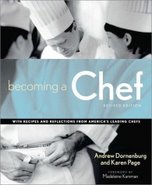
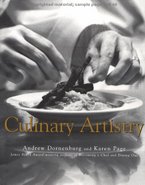


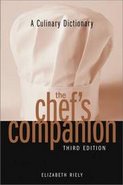

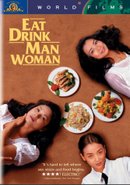
.jpg)






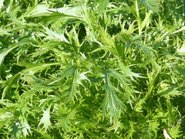


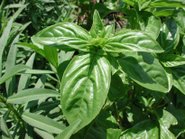
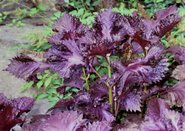
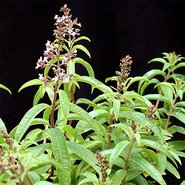
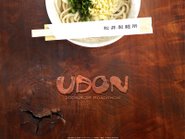


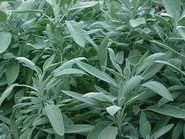
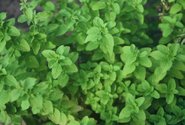

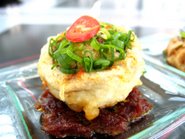


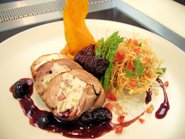
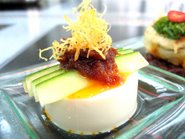
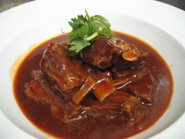
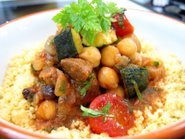



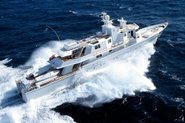
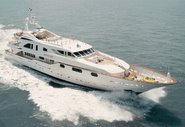
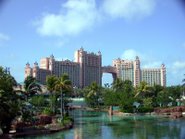



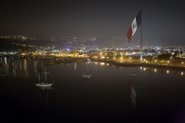
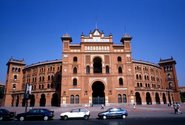



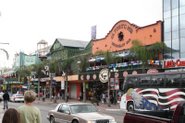


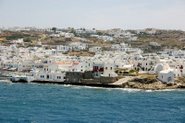








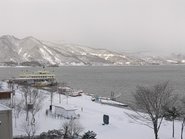








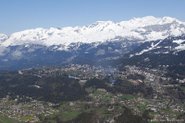




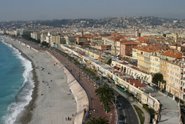
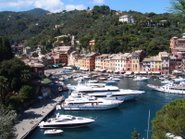





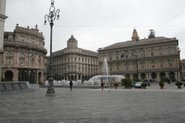



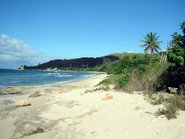




No comments:
Post a Comment